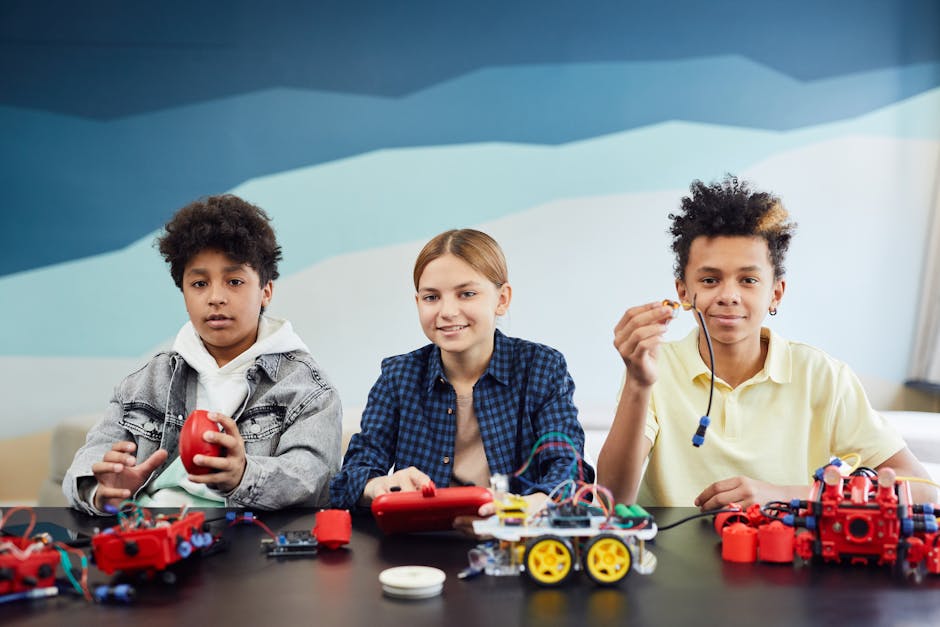The Science Behind Building Blocks and Their Educational Value
Building blocks have been a staple in childhood playrooms for generations. These simple yet versatile toys offer more than just entertainment; they are a powerful tool for learning and development. In this blog post, we’ll explore the fascinating science behind building blocks and their immense educational value. Whether you’re a parent, educator, or simply curious, this journey into the world of building blocks will be both enlightening and fun! 🧱✨
Table of Contents
1. Introduction
2. The Cognitive Benefits of Building Blocks
3. Physical Development and Coordination
4. Social Skills and Emotional Growth
5. Creativity and Imagination
6. Building Blocks in STEM Education
7. Conclusion
8. FAQ
The Cognitive Benefits of Building Blocks
Building blocks are more than just colorful toys; they are powerful tools that stimulate cognitive development in children. When children engage with building blocks, they are unknowingly practicing a range of cognitive skills that are crucial for their development.
Spatial Awareness: Building blocks help children understand spatial relationships. As they stack, sort, and create structures, they learn about balance, symmetry, and geometry. This spatial awareness is foundational for subjects like mathematics and reading.
Problem-Solving Skills: Every block tower that topples teaches a lesson in problem-solving. Children learn to analyze why their structure fell and how to improve their design. This trial-and-error approach fosters resilience and critical thinking skills.
Physical Development and Coordination
While it might seem like a simple task, manipulating building blocks requires a lot of physical coordination. Here’s how these toys contribute to physical development:
Fine Motor Skills: Picking up and placing blocks require precise movements. This activity strengthens hand-eye coordination and fine motor skills, which are essential for writing and other daily tasks.
Gross Motor Skills: Larger building blocks often require children to use their whole body, enhancing their gross motor skills. Crawling or reaching for blocks helps develop muscles and coordination.
Social Skills and Emotional Growth
Building blocks are not just solo toys; they are perfect for group play, which is crucial for social development. Here’s how:
Collaboration: When children work together to build a structure, they learn to share, negotiate, and collaborate. This cooperation fosters teamwork and enhances social bonds.
Emotional Regulation: Building block play can sometimes lead to frustration, especially when structures collapse. Through this, children learn patience and emotional regulation, essential skills for handling real-life challenges.
Creativity and Imagination
One of the most exciting aspects of building blocks is their ability to spark creativity and imagination. Here’s how they do it:
Open-Ended Play: Building blocks provide endless possibilities, allowing children to create whatever their imagination conjures. This open-ended play enhances creativity and encourages innovative thinking. 🌈
Storytelling: As children build, they often create narratives around their structures. This storytelling aspect enhances language skills and helps in cognitive development.
Building Blocks in STEM Education
Building blocks are increasingly being recognized for their role in STEM (Science, Technology, Engineering, Mathematics) education. Here’s why:
Engineering Principles: Building blocks introduce basic engineering principles. Children learn about weight distribution, structural integrity, and design, laying a foundation for future engineering concepts.
Scientific Inquiry: Through experimentation, children learn to hypothesize, test, and draw conclusions. This scientific inquiry nurtures curiosity and a love for learning.
Conclusion
Building blocks are far more than just a playtime activity; they are a dynamic educational tool that fosters cognitive, physical, social, and emotional development. From enhancing spatial awareness to sparking creativity, these timeless toys provide children with skills that last a lifetime. So, the next time you see a child building with blocks, remember that they’re not just playing—they’re learning, growing, and preparing for the world. 🏗️💡
FAQ
1. At what age should children start playing with building blocks?
Children can begin playing with simple building blocks as early as six months old. As they grow, they can transition to more complex blocks that challenge their skills.
2. Are building blocks suitable for older children?
Absolutely! Building blocks can be used by children of all ages. Older children can tackle more complex structures and even explore concepts related to physics and engineering.
3. What types of building blocks are best for educational purposes?
While all building blocks have educational value, sets that include a variety of shapes and sizes can enhance creativity and problem-solving skills. Look for blocks that encourage open-ended play.
4. Can building blocks help children with special needs?
Yes, building blocks can be particularly beneficial for children with special needs. They help improve coordination, social interaction, and cognitive skills in a fun, engaging manner.
5. How can parents and teachers incorporate building blocks into learning?
Parents and teachers can create structured activities or allow free play to encourage learning. Incorporating themes or challenges can also make block play educational and exciting.
